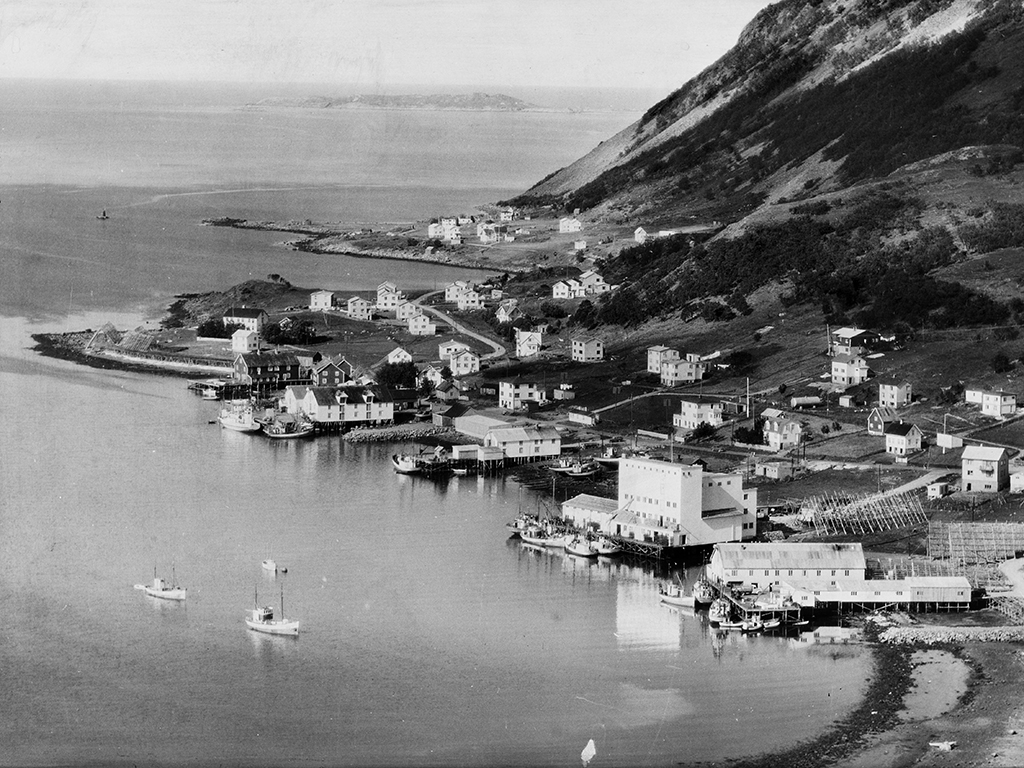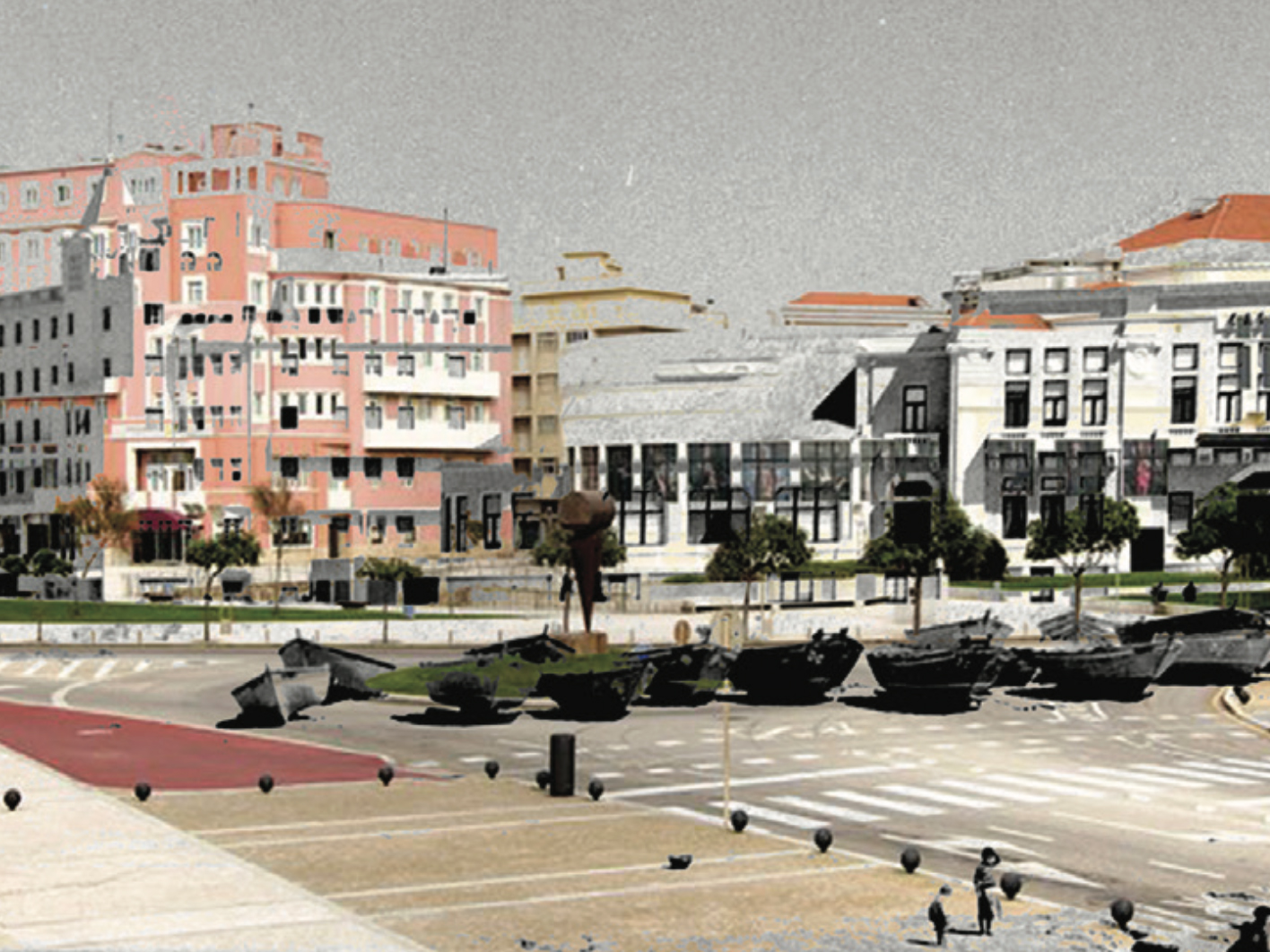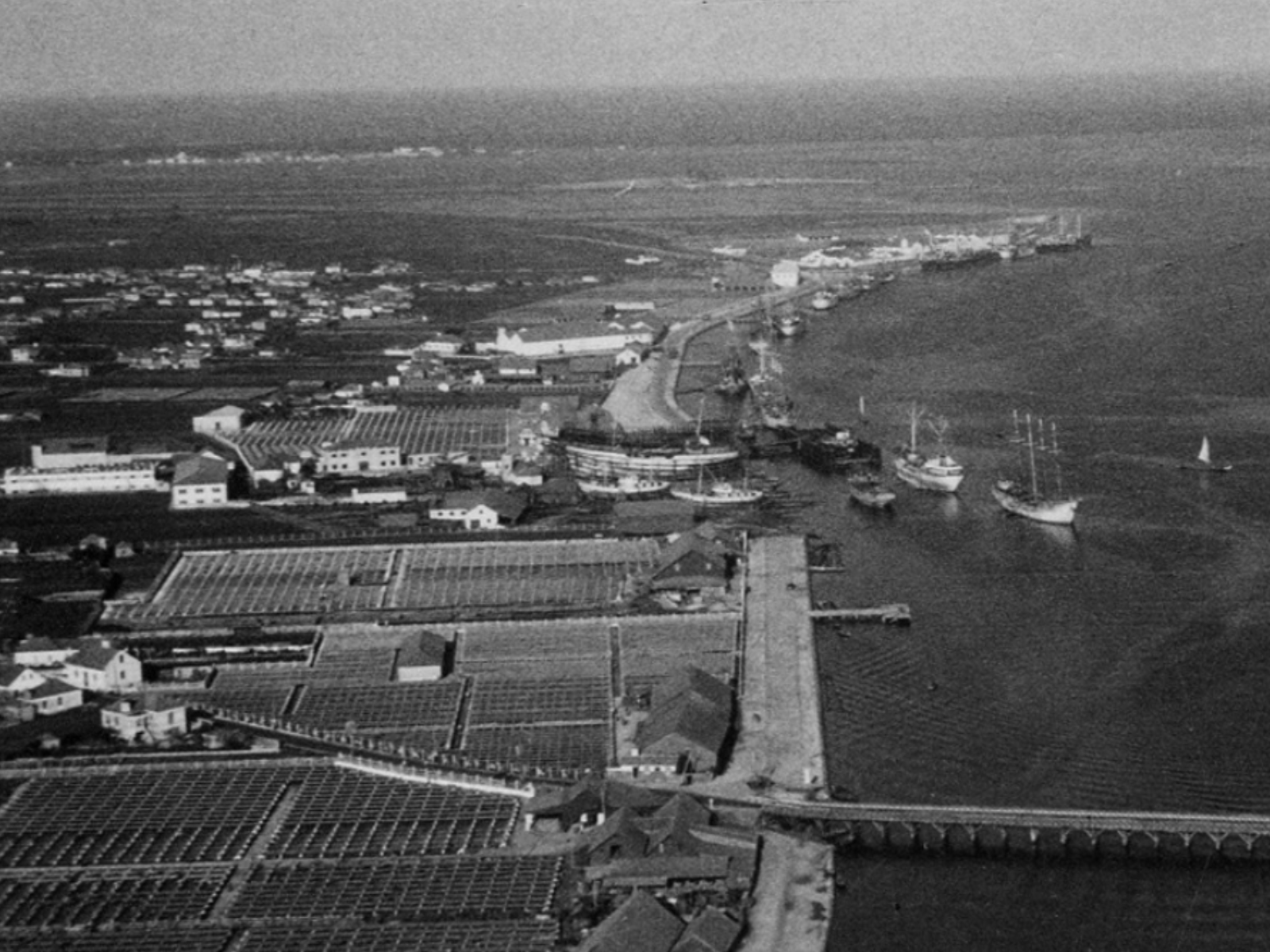North Atlantic Coast. A Monography of Place
As we learn on the early pages of the book North Atlantic Coast: A Monography of Place,[1] its authors Karl Otto Ellefsen and Tarald Lundevall moved to Northern Norway in the early 1970s.
As young graduates of the Oslo School of Architecture, they landed in Myre, a growing community that in the 1950s had transitioned from a remote village to an important industrial fishing centre propelled by the Norwegian welfare society. Located in the Vesterålen archipelago, Myre is miles north of the Artic Circle in an area where the ocean seabed falls away steeply to reach considerable depths, a marine environment whose topography provides an ideal place for cod to spend its winter months spawning. Ellefsen and Lundevall practised as architects and urbanists, contributing to the development of local communities and acquiring an extended knowledge of the urban dynamics of northern landscapes. Moving back to Oslo, they continued a planning practice, combined with teaching and research in architecture. The book, which has now been translated into English, revisits their early years in Myre and takes advantage of their unique expertise to assess the transformations the territory has undergone. Starting from the early twentieth century, the book assesses the history of Norwegian fishing policies and reveals their impact on the dynamics of the coastal village. In their words, as architects and ‘not experts’ in fisheries, their purpose is to ‘discuss the physical imprint of fisheries’.[2]
If Myre’s origins can be traced back to the vernacular, its development results from industrial fisheries fostered by Norway’s social democratic state policies. After presenting a crisp historical contextualization of Myre and its neighbouring fishing villages, Ellefsen and Lundevall’s book assesses the urban transformations in Myre from the perspective of the fishery cooperative Øksnes-Langenes Fiskeindustri (ØLF). The cooperative propelled development there until the liberalization of economy, fisheries, and politics in the 1980s. They describe in detail how, during that period, the fishing and food-processing techniques were transformed and land occupation evolved: in terms of both their sociological and architectural context and results, these techniques impacted the various housing types and their inhabitants (including themselves), the community buildings and the rituals they staged as well as commerce and cultural activities. This lively picture combines the authors’ reflections with the published memoirs of Kaare Hagerup (who directed ØLF for three decades), interviews with various players on the local and national scene, and a wealth of secondary sources on Norwegian political, social, and fishing history. Their practice as urban planners and teachers extended their research into the contemporary challenges faced by Myre, extending the scope of their analyses to the transformation that followed the fisheries collapse of the 1980s. When the ØLF went bankrupt, Myre became more of a ‘transit port’. These more recent events positioned the town within new logistics networks, introducing it to new processing techniques, and an army of seasonal workers flocking yearly into the town between January and April. Everything changed in the North Atlantic fishing landscape. The architecture reflects the fact that ‘the fresh Atlantic cod markets demand […] high-speed handling and quick sales during a tough, brutal season [and] an effective fleet of smaller boats that can quickly cover the distance from the fishing grounds to the point of delivery.’[3] Again, from the authors’ careful analysis, we find Myre as a pivotal point in the consumption of cod in world cuisines and the marine locus of the species’ yearly spawning.
What is remarkable in the book, beyond the predictable quotes from Lewis Mumford, Sigfried Giedion, and Christian Norberg-Schulz, is that the authors deal in detail with the fishing and processing techniques, as well the fishing policies, that engendered the place. That is what makes the translation of this book so relevant, as most of the sources speak Norwegian—the language conveying the quintessential knowledge of local dynamics. By presenting their analysis in today’s lingua franca, their expertise can be shared and discussed not as a local history but as part of a wider history, a discussion that extends to the Danish, Dutch, French, Spanish, Portuguese, American, Icelandic, and English fishing fleets, as well as other nationalities operating in the North Atlantic. From this Atlantic perspective, underlined in the title of their book, the history of Myre is subsumed under the shared narrative of cod as a major staple food.
Hence, we must relate the monograph on Myre to other sources and works. It is worth setting North Atlantic Coast alongside the various outputs of the History of Marine Animal Populations (HMAP) research project.[4] HMAP gathered together scientists to trace the history of ocean biodiversity, with a special focus on fish and sources capable of assessing the catches of particular historical periods. As a research project led by biologists and historians, architecture seems to have no place in their results. Still, we can find surprising insights into the relationship between cod marine ecology and settlements, for instance in eighteenth- and nineteenth-century Newfoundland. Assessing significant quantities of data using an elaborated bioeconomic statistical model, Ransom Myers demonstrates that the population of specific Newfoundland regions remained proportional to the increase and decrease of cod catches, thus relating the local population to the pressure exerted on fish stocks.[5] By analysing published debates on the ups and downs of local fisheries, Sean Cadigan and Jeffrey Hutchings demonstrate that the movement of fishing grounds northwards towards the Labrador peninsula in the nineteenth century was more the result of overfishing—which provoked the collapse of inshore fishing stocks and cod biomass—than an outcome of changing environmental conditions.[6]
From a biological perspective, these two Newfoundland articles refer to a different cod population from the Arctic population chased by Myre fishermen. Even within Newfoundland stocks there are significant genetic variations between inshore (coastal) and offshore (fishing bank) cod populations, whose mixed behaviours and distribution confound scientific attempts to master the ecological balance between fishing mortality and natural fish mortality rates, a problem that ultimately led to the near extinction of Newfoundland cod populations. Moreover, Norwegian cod stimulated various patterns of urbanization and architecture, and the same happened with Newfoundland cod, its urban history dating back to the fifteenth century, when the first European fishermen started to operate in the region. It could also apply to the North Sea cod-fishing culture, whereby other HMAP-affiliated works have traced the dynamics of Swedish and Dutch fisheries from an ecological perspective, assessing their consequent impact on marine environments and cod populations.[7]
Ellefsen and Lundevall close their book with a pungent assessment of Myre’s contemporary logistics landscape. The fishing trade has little in common with the not-so-remote fishing villages, implying a novel relationship between local and seasonal populations, while taking advantage of sophisticated new fishing technologies capable of exerting unseen pressure on fish stocks. It reminds us that oceans have become too small and the inland ecological pressure upon fish stocks too large, a pressure likely to have unforeseen and unpleasant outcomes. Their ‘monography of place’ resonates with alarming reports from fishing history, such as the overviews of Callum Roberts and Didier Gascuel, [8] or of sheer human greed, as depicted in the relentless inquiries of Ian Urbina. [9] While the architects aim to ‘discuss the physical imprint of fisheries’, reading their book demands our consideration of the fishing imprint of the physical constructions.
From the perspective of architectural history, Myre’s monograph can be a significant contribution to an Atlantic History of Architecture. Such a history can overcome the national limitations of historiographic inquires and articulate a collective endeavour striving for an ecological assessment of architecture. Fish are oblivious to different nationalities and their behaviour is highly dependent on the ecosystems they live in. Following the fish involves tracing their environmental and ecological conditions, and it is possible to read the architectural landscape according to such behaviours and fluctuations. Although it would be naive to ignore the social and cultural dynamics that built Myre—which Ellefsen and Lundevall have assessed with detail and clarity—it is now time to focus on its environmental and ecological aspects. As one well-known architect would argue, ‘Everything is there; everything will depend on the effort made and on the attention paid to these alarming symptoms.’ [10]
The Version of Record of this manuscript has been published and is available in The Journal of Architecture, vol. 26, no. 4, pp. 565-569, June 2021.
[1] Karl Otto Ellefsen and Tarald Lundevall, North Atlantic Coast: A Monography of Place, trans. Stig Oppedal (Oslo: Pax Forlag, 2019). ISBN: 9788253041469. The translation revises and expands the iconography of the original Norwegian edition Fiskevær: Myre på Yttersida (Olso: Pax Forlag, 2017).
[2] Ellefsen and Lundevall, North Atlantic Coast, 8.
[3] Ellefsen and Lundevall, North Atlantic Coast, 382.
[4] Conducted by marine ecology scholars, HMAP was the historical component of the wider research project Census of Marine Life that was developed between 2000 and 2010. The census led to the establishment of the Ocean Biogeographic Information System (OBIS), an open database of marine biodiversity.
[5] Ransom A. Myers, ‘Testing Ecological Models: The Influence of Catch Rates on Settlement of Fishermen in Newfoundland, 1710–1833’, in Poul Holm, Tim D. Smith, and David J. Starkey (eds.), The Exploited Seas: New Directions for Marine Environmental History (St John’s: International Maritime Economic History Association / Census of Marine Life, 2001), 13–29.
[6] Sean T. Cadigan and Jeffrey A. Hutchings, ‘Nineteenth-Century Expansion of the Newfoundland Fishery of Atlantic Cod: An Exploration of Underlying Causes’, in Holm, Smith, and Starkey, The Exploited Seas, 31–65.
[7] I am referring here to the following publications: René Taudal Poulsen, An Environmental History of North Sea Ling and Cod Fisheries, 1840–1914 (Esbjerg: Fiskeri-og Sofartsmuseets Forlag, 2007); Christine Overgaard, Een spiering uitwerpen om een kabeljauw te vangen: How and Why the Dutch Fished for Cod 1818–1911 (Amsterdam: Amsterdam University Press, 2014).
[8] Callum Roberts, The Unnatural History of the Sea: The Past and the Future of Humanity and Fishing (London: Gaia, 2007; Didier Gascuel, Pour une révolution dans la mer: De la surpêche à la résilience (Arles: Actes Sud, 2019).
[9] Ian Urbina, The Outlaw Ocean: Crime and Survival in the Last Untamed Frontier (London: The Bodley Head, 2019).
[10] Le Corbusier, Toward an Architecture, trans. John Goodman (Los Angeles: The Getty Research Institute), 307. First French edition: Vers une architecture (Paris: Crès, 1923).


